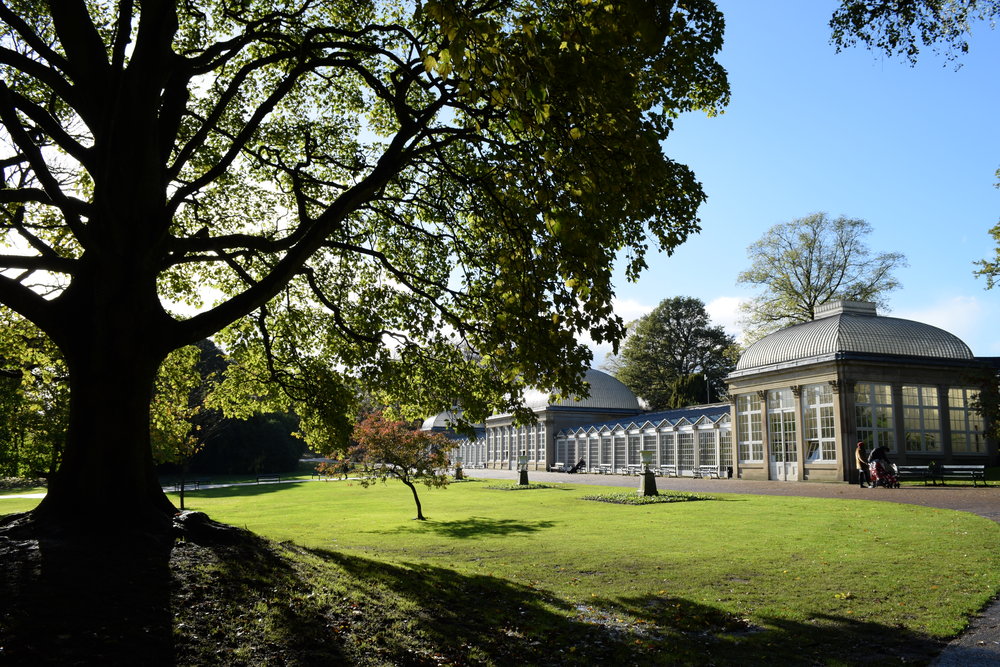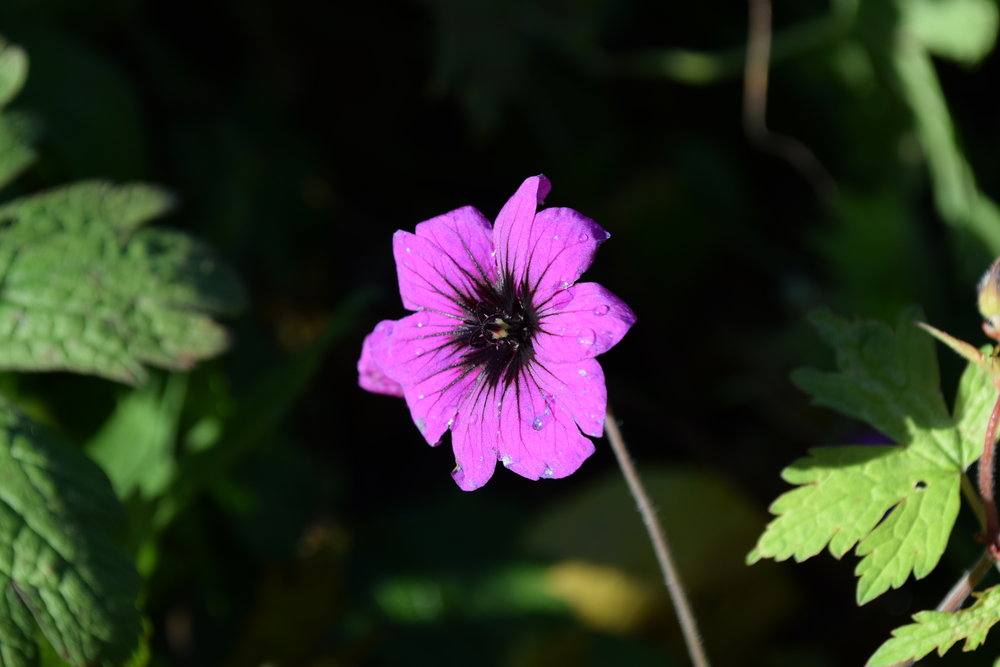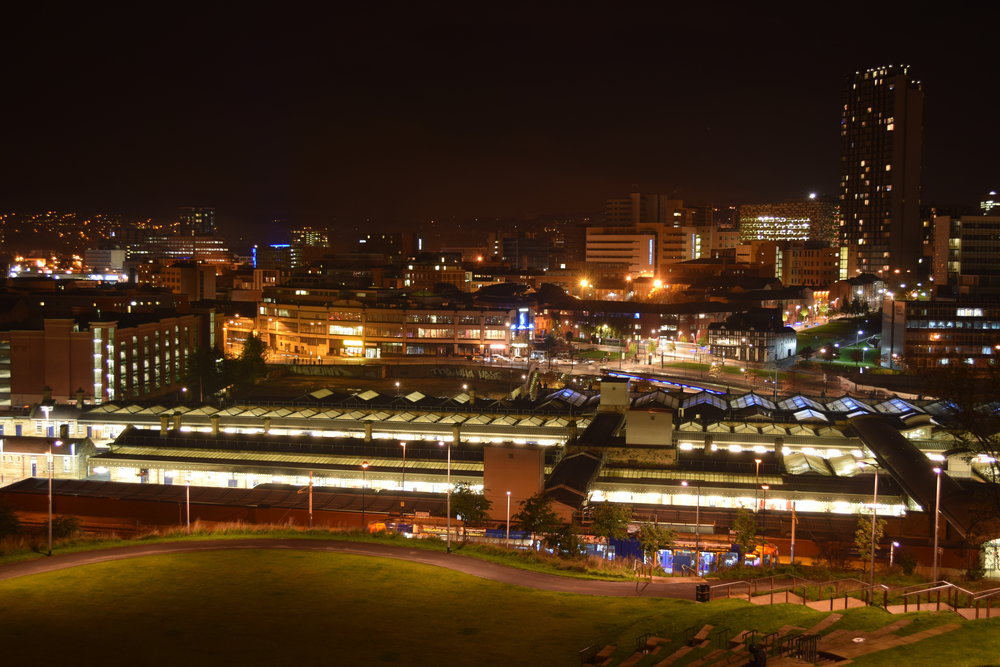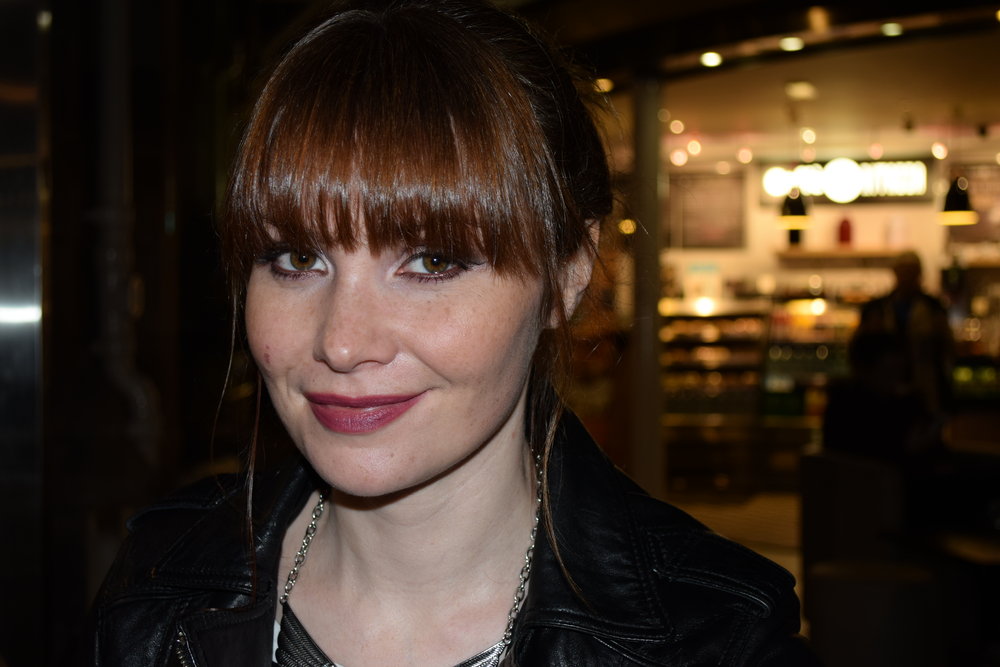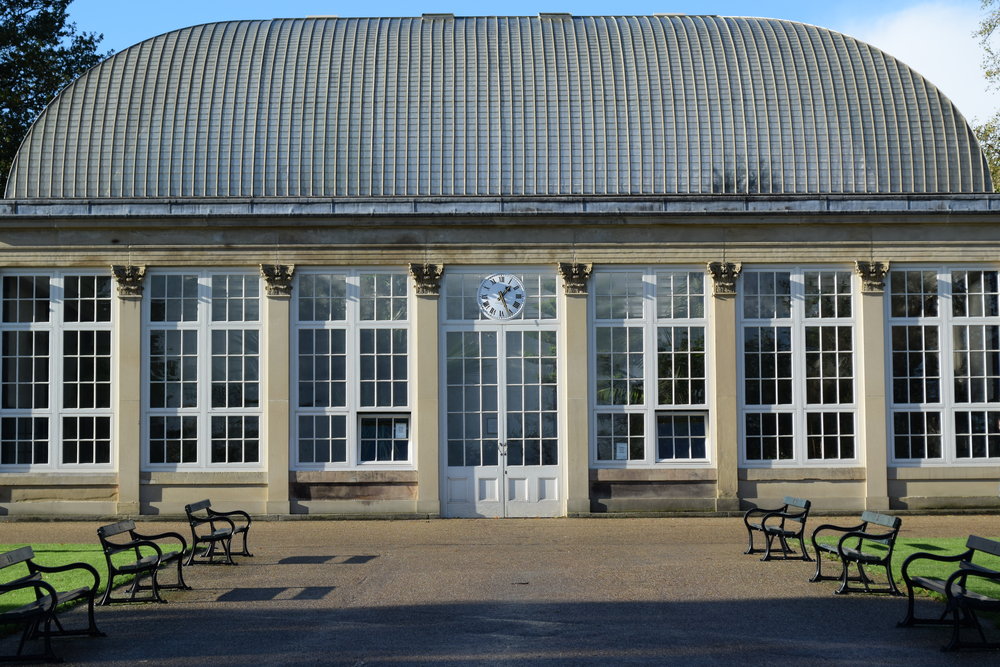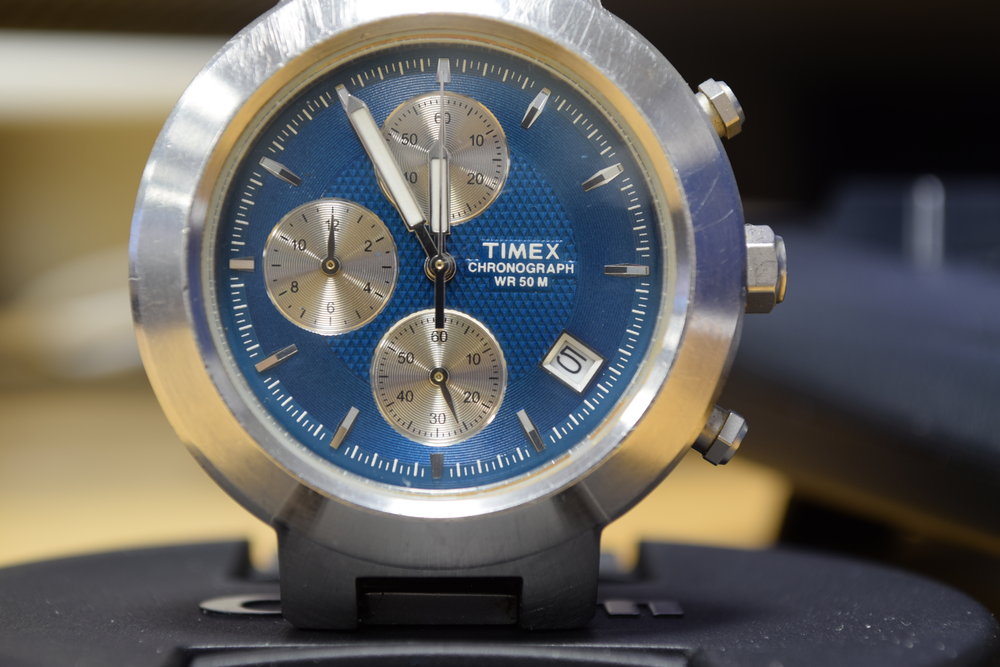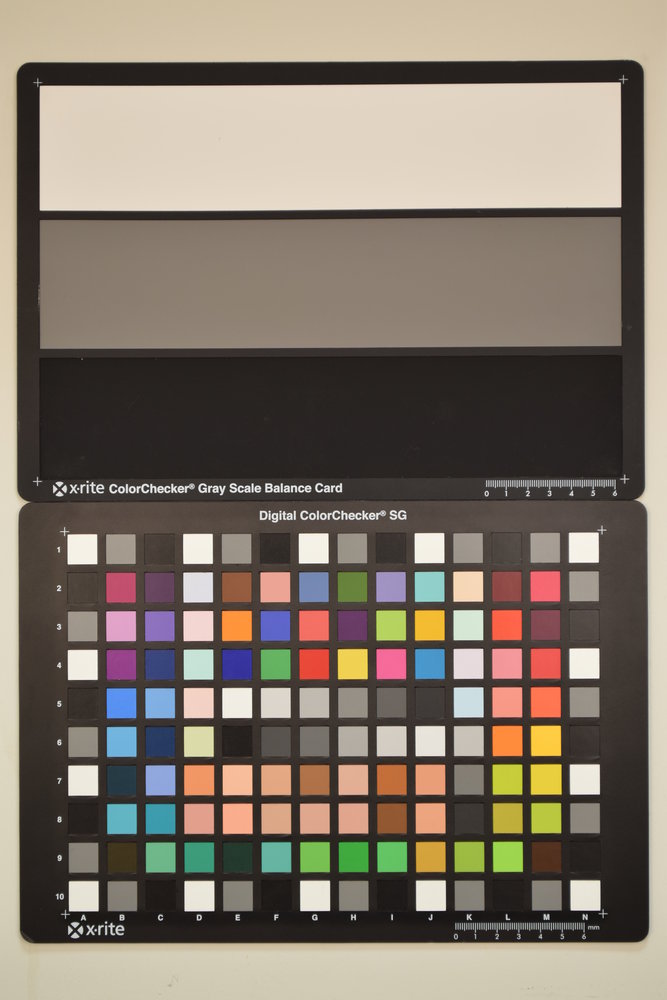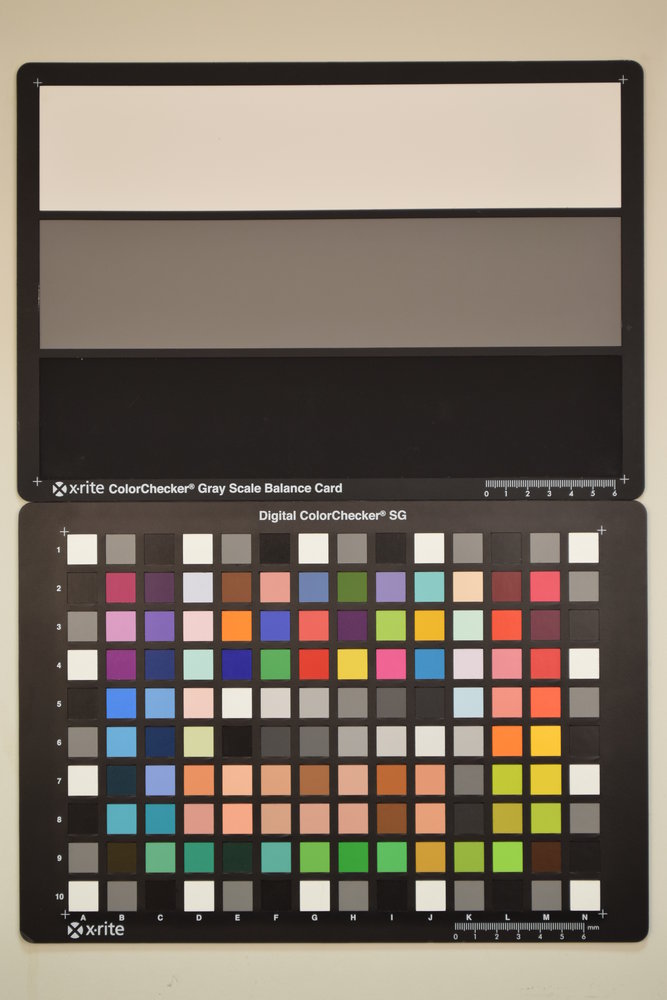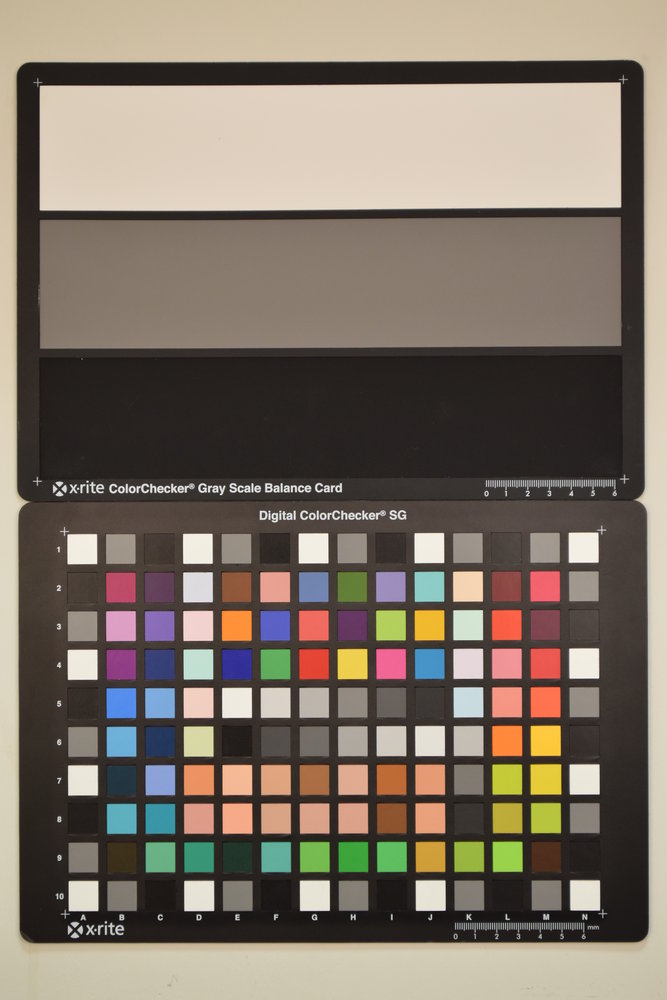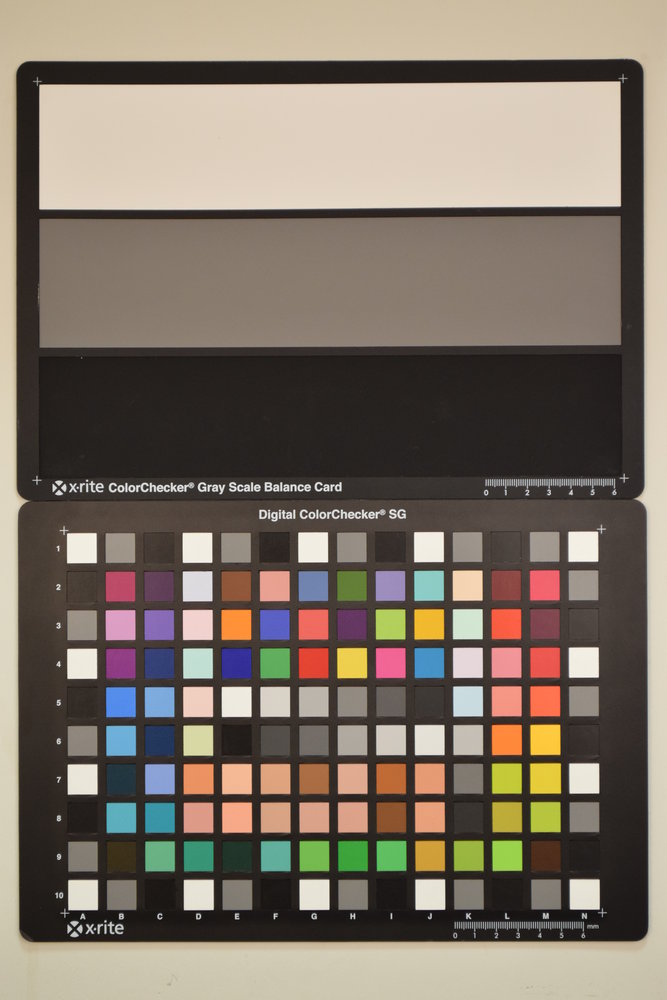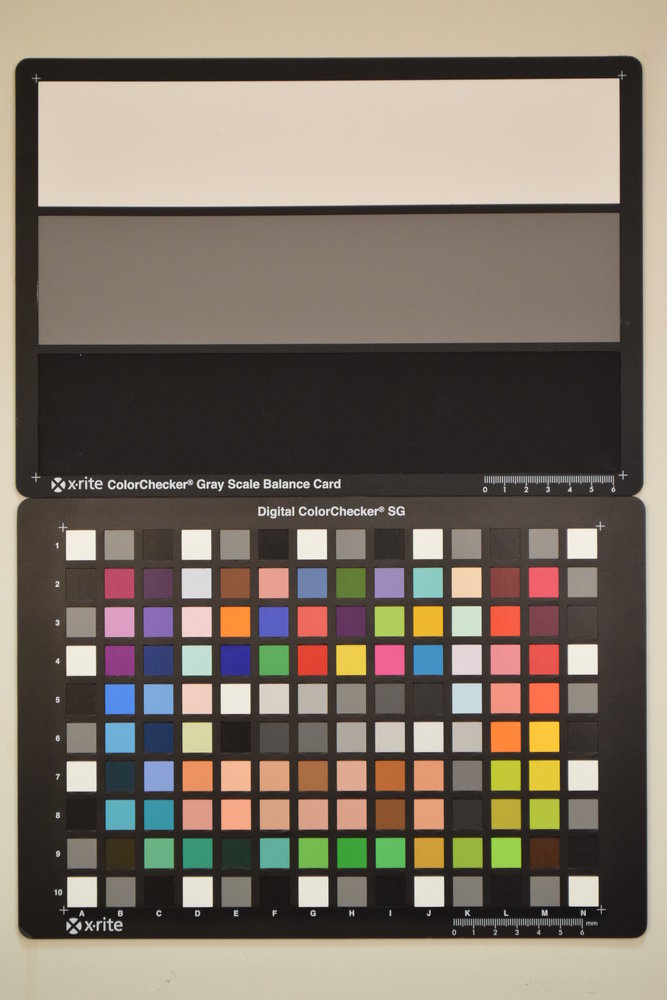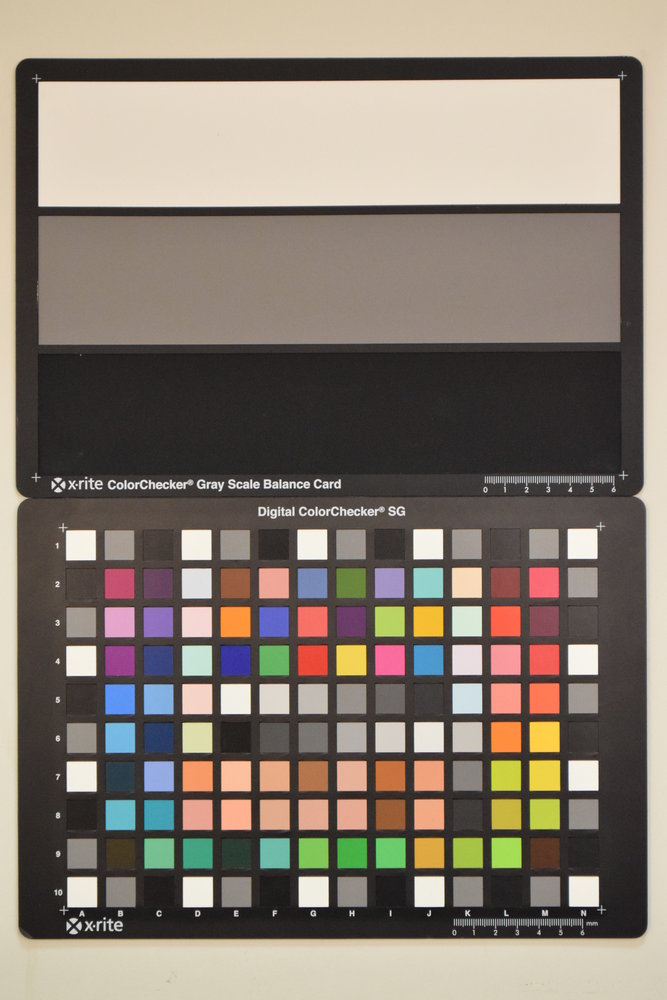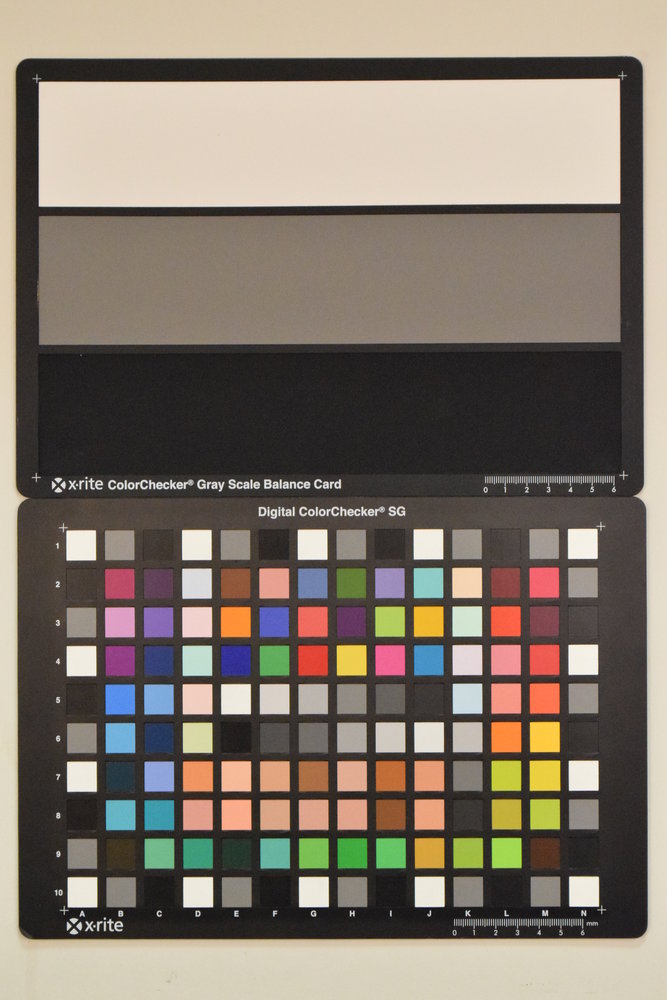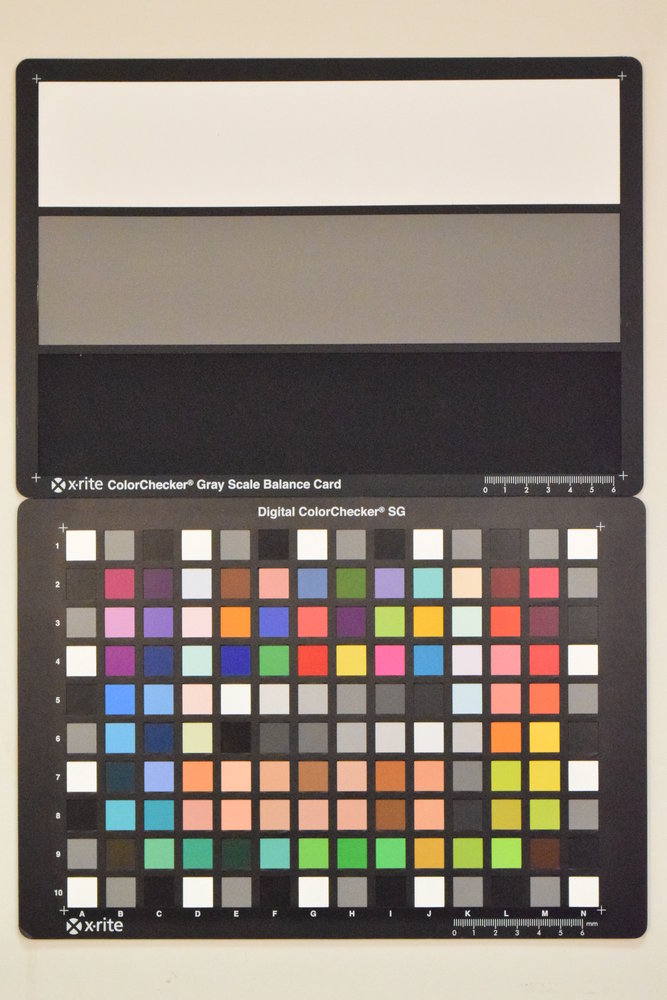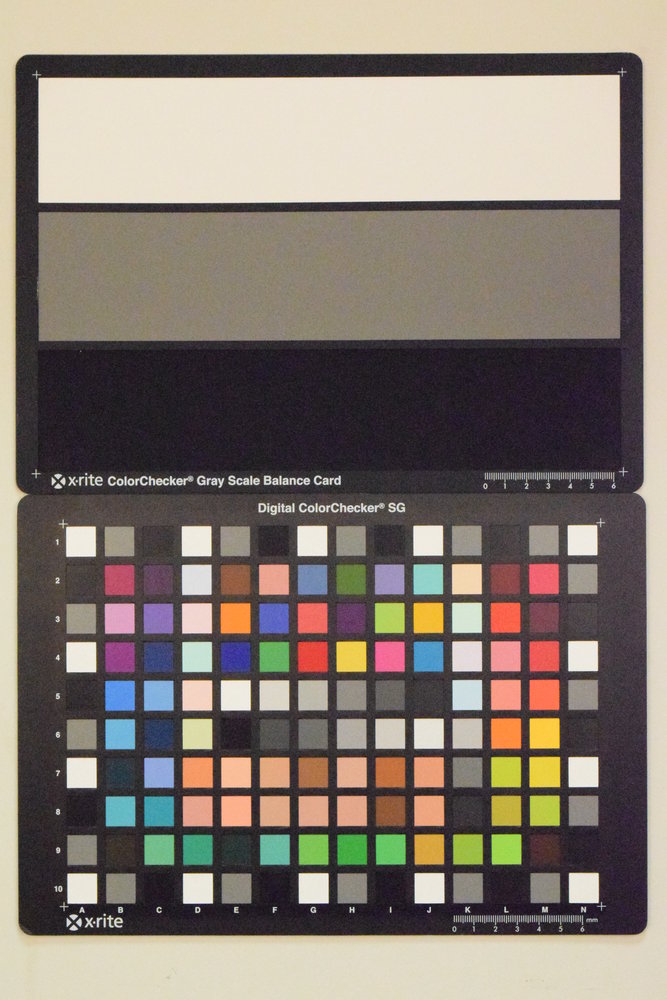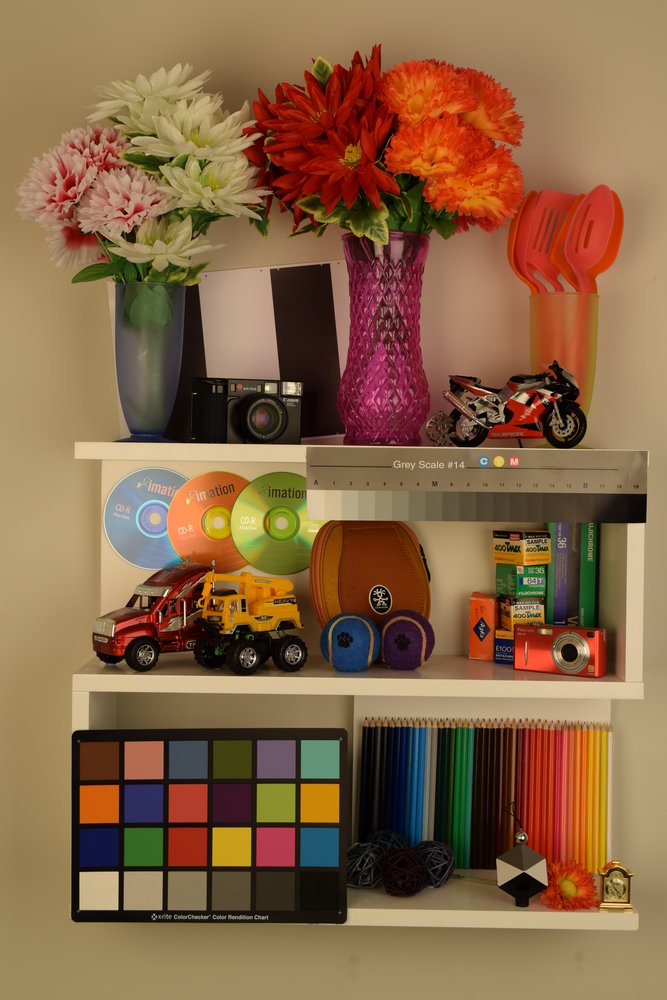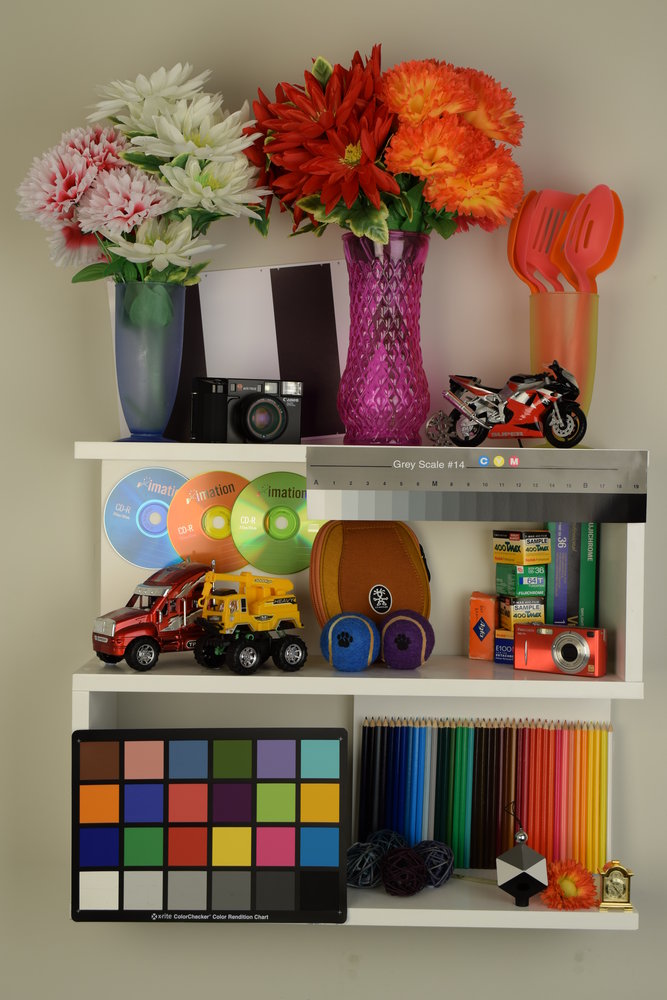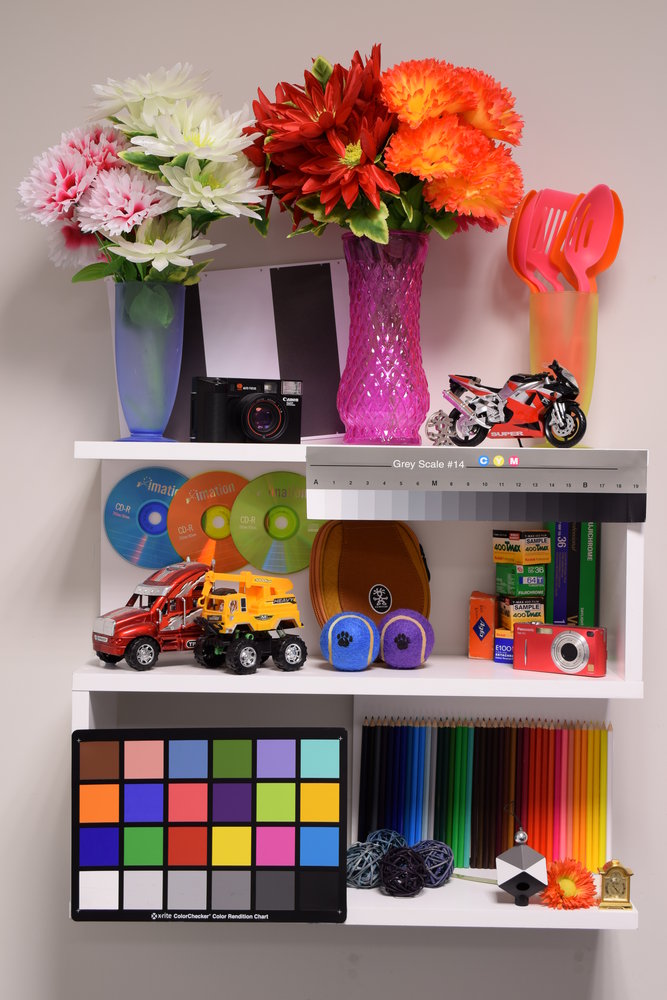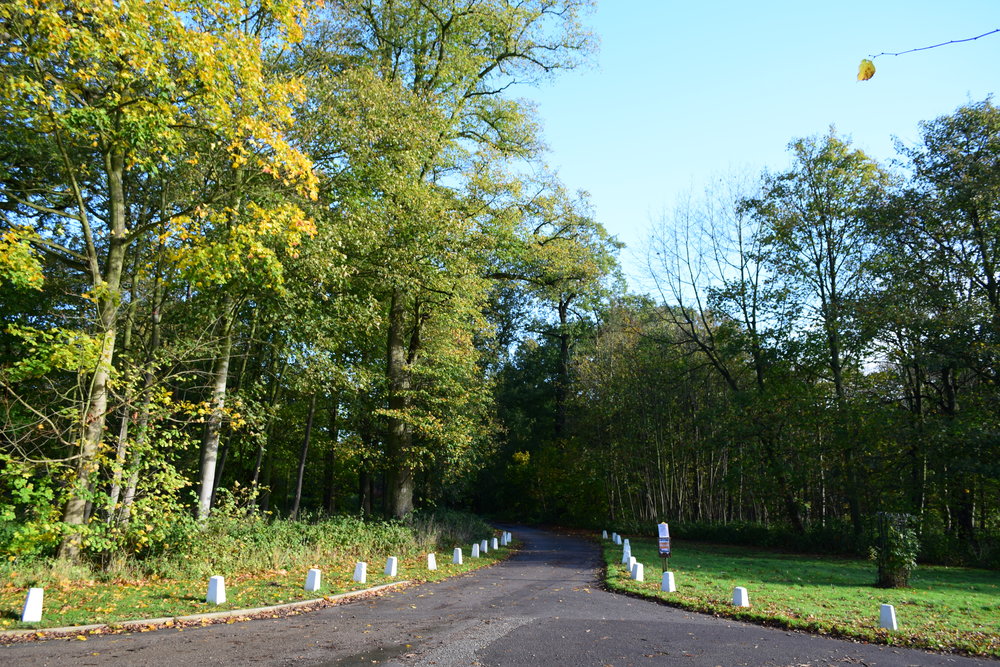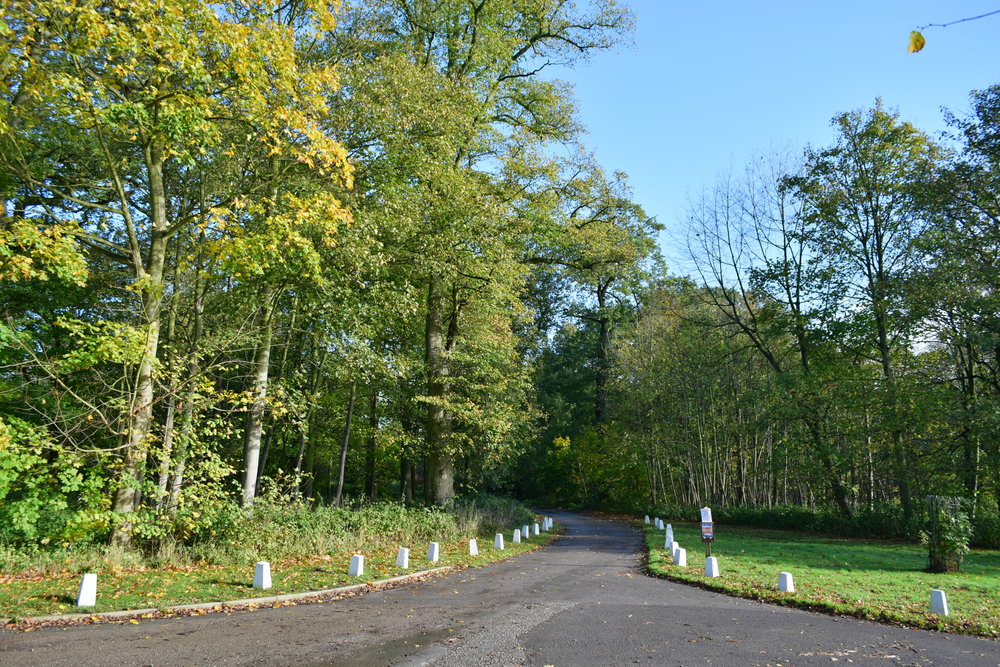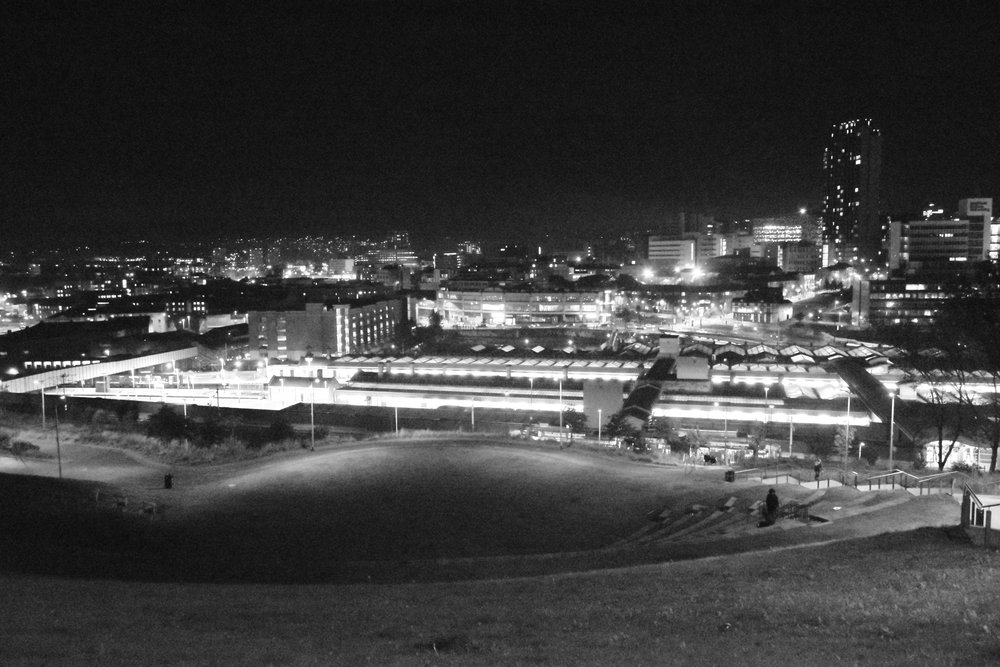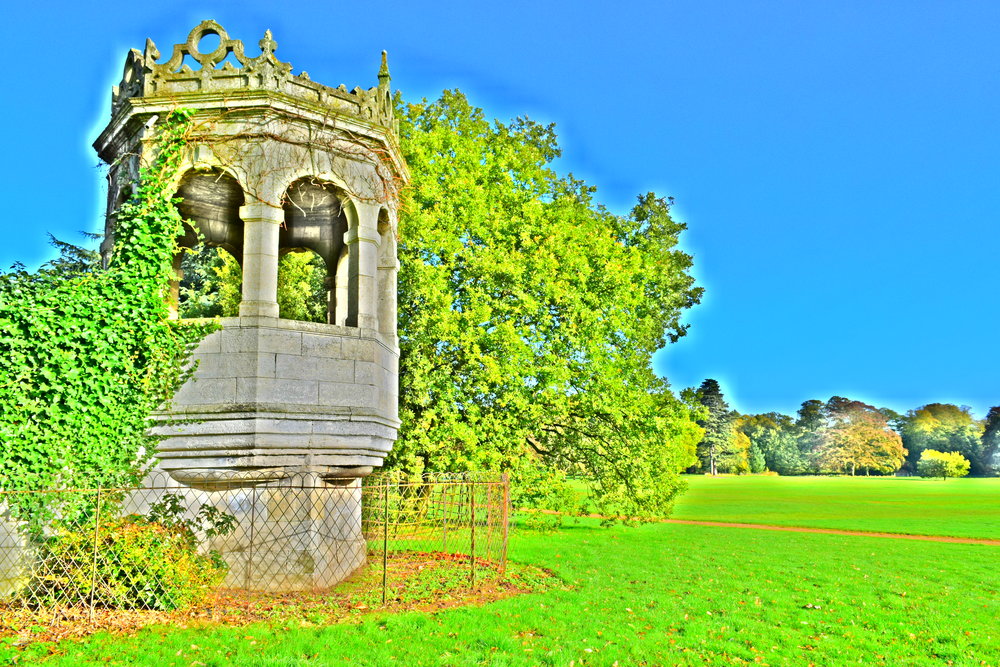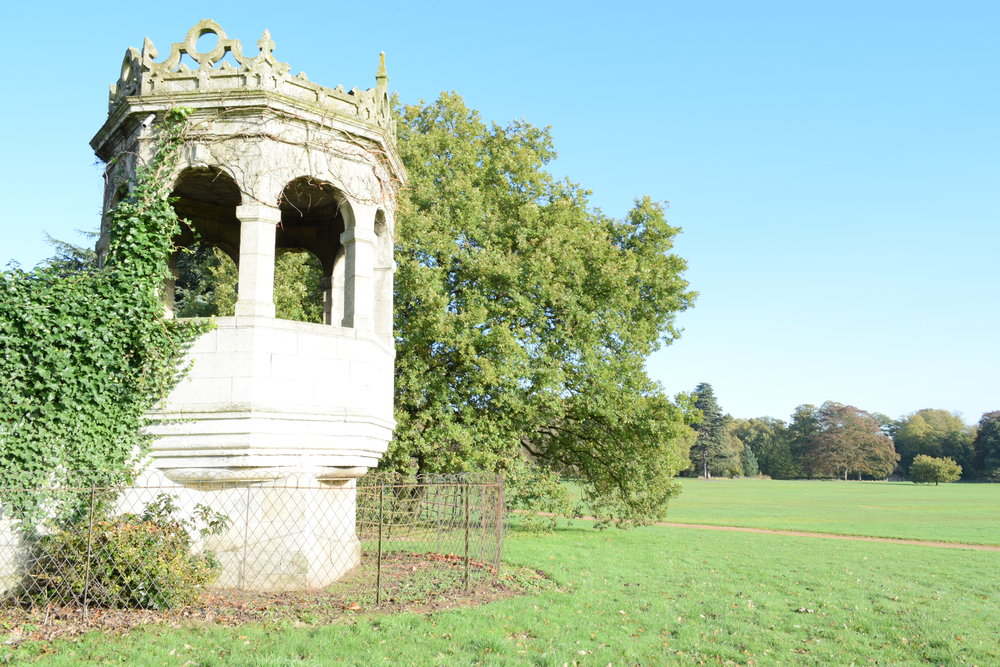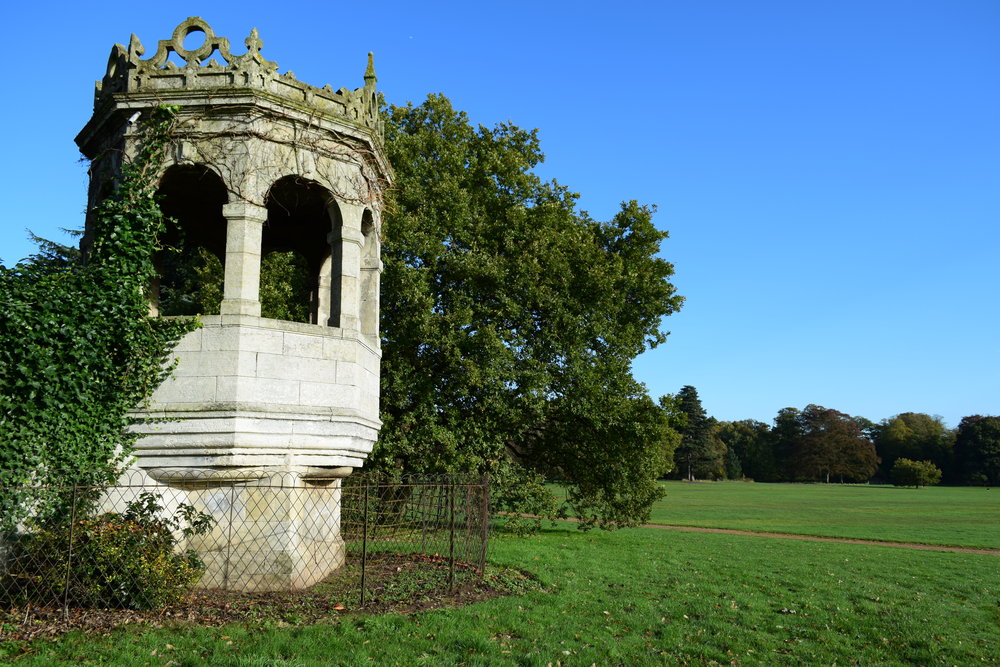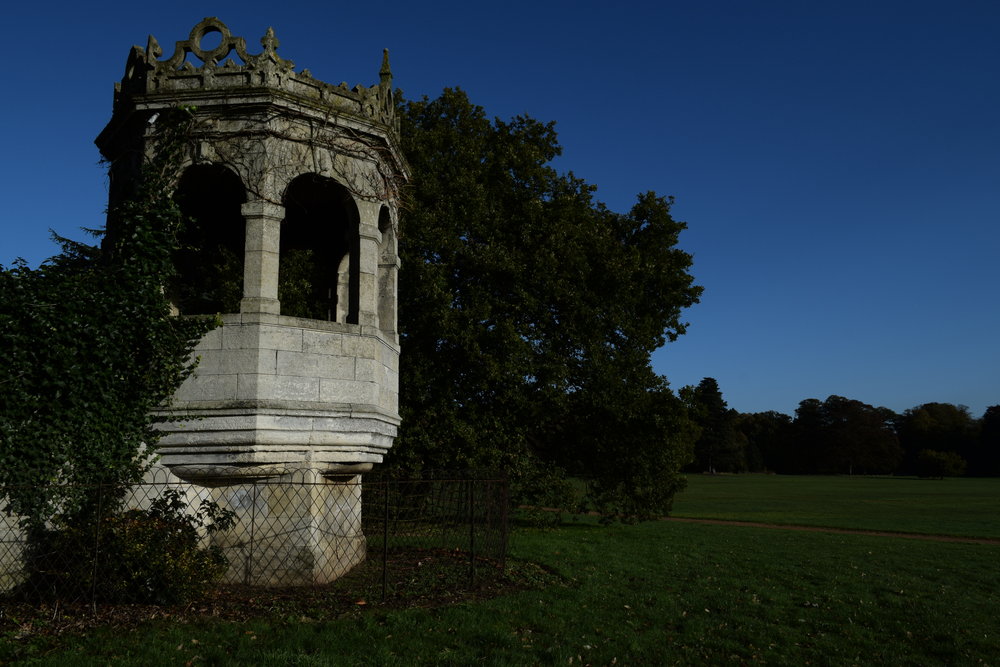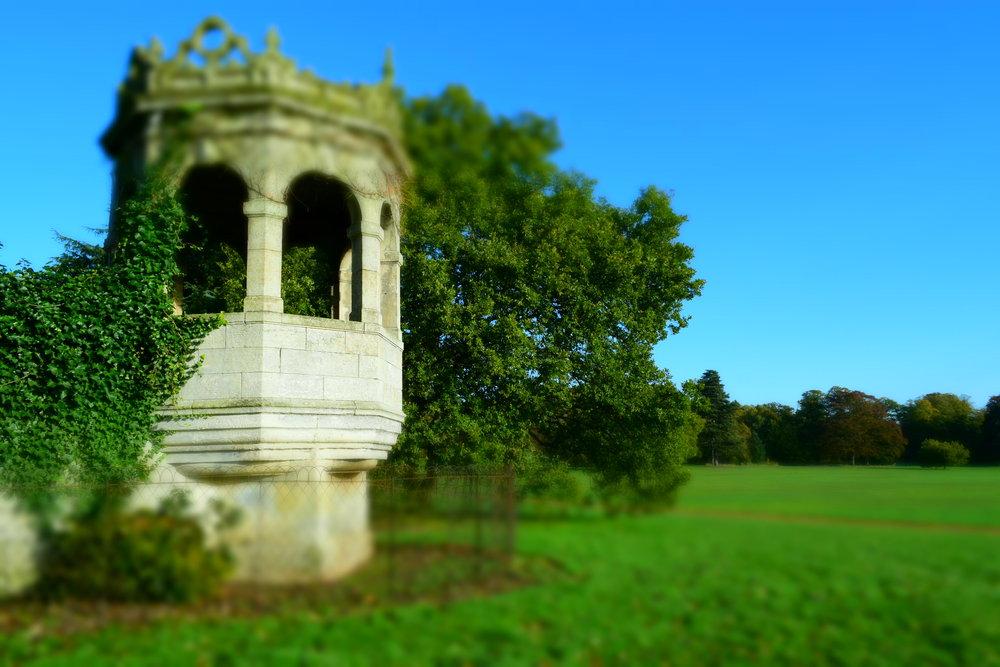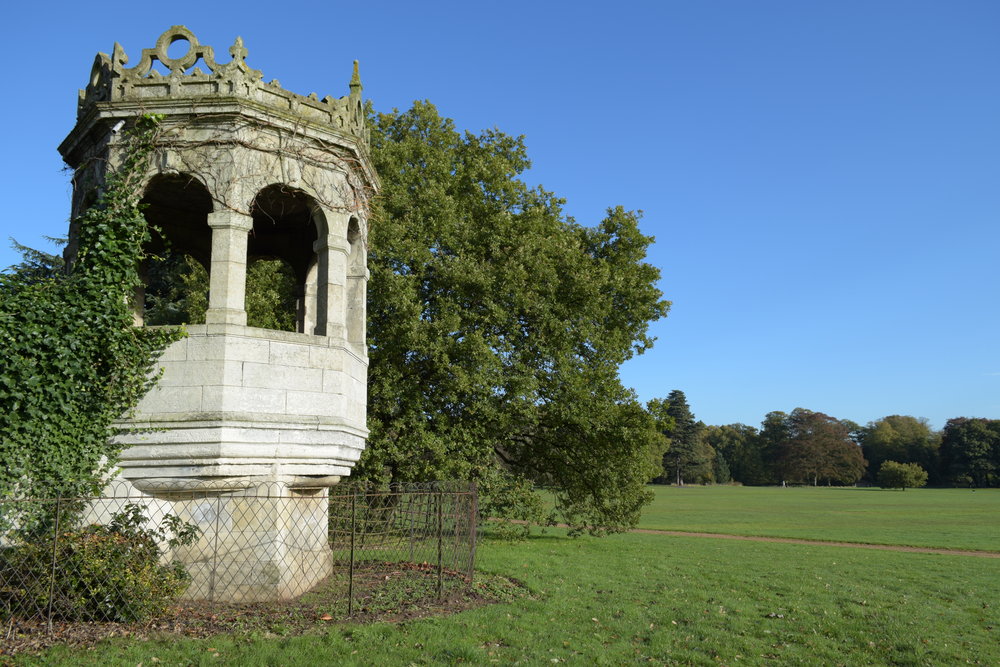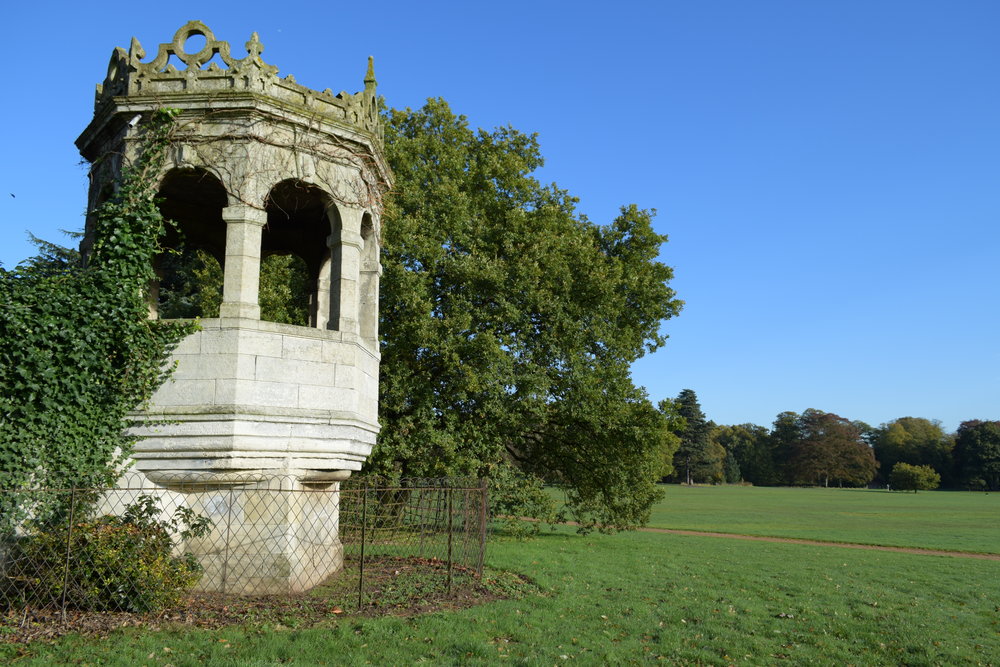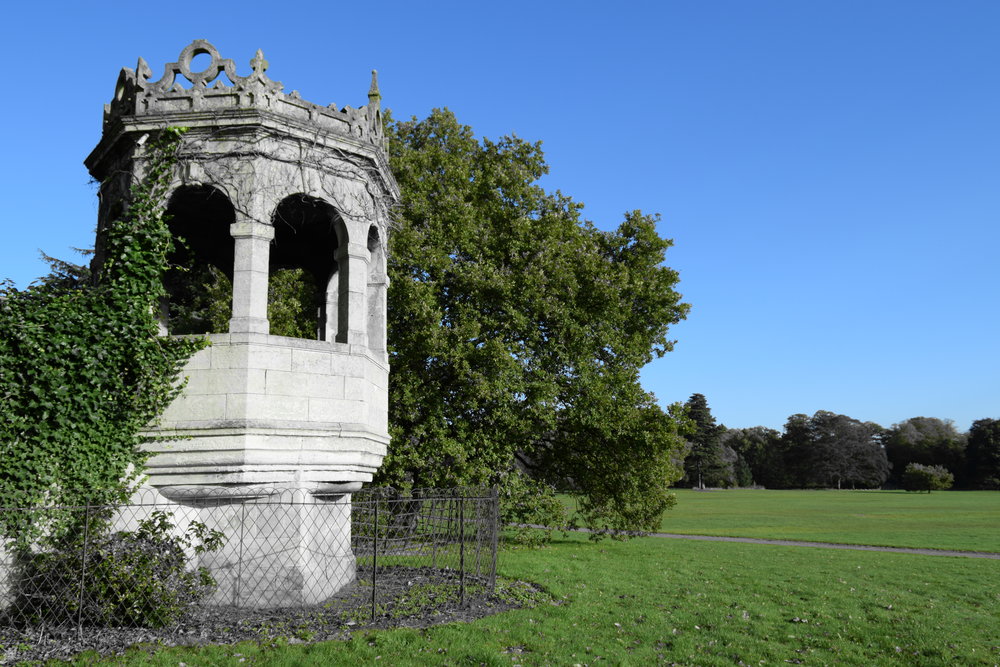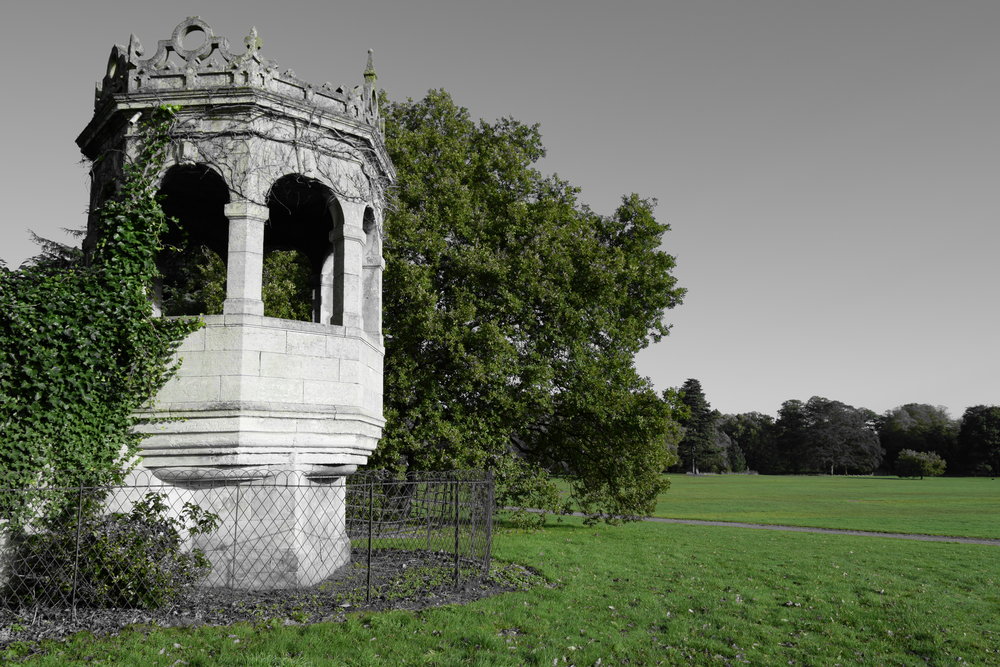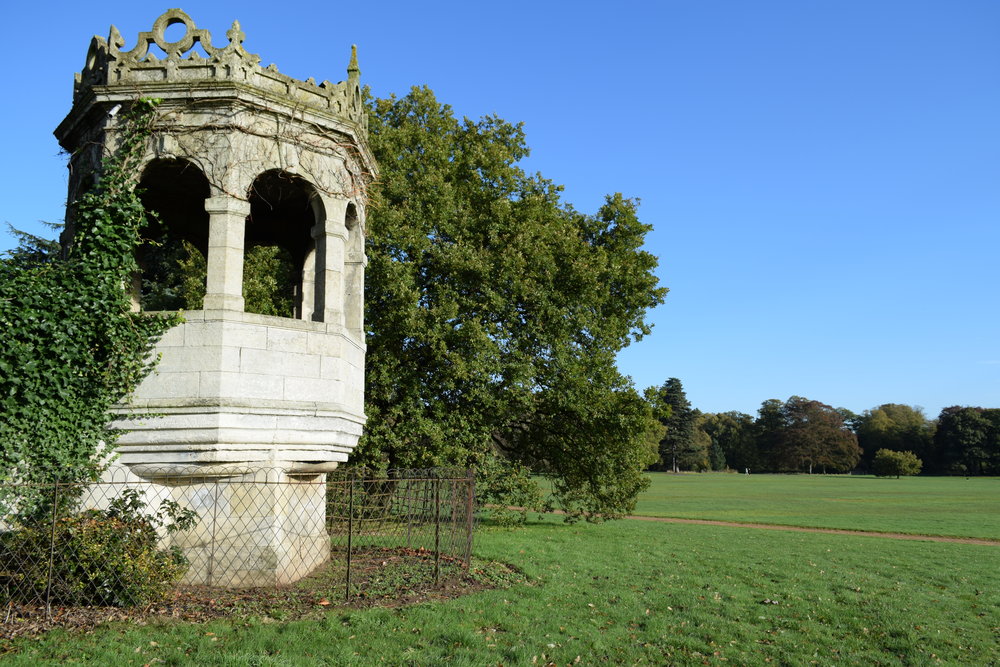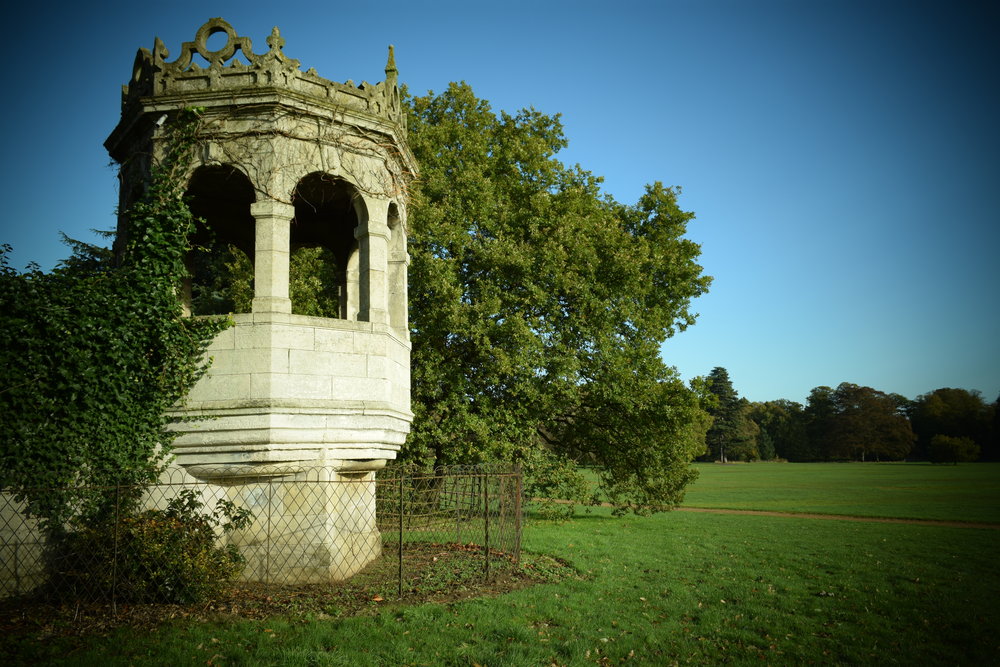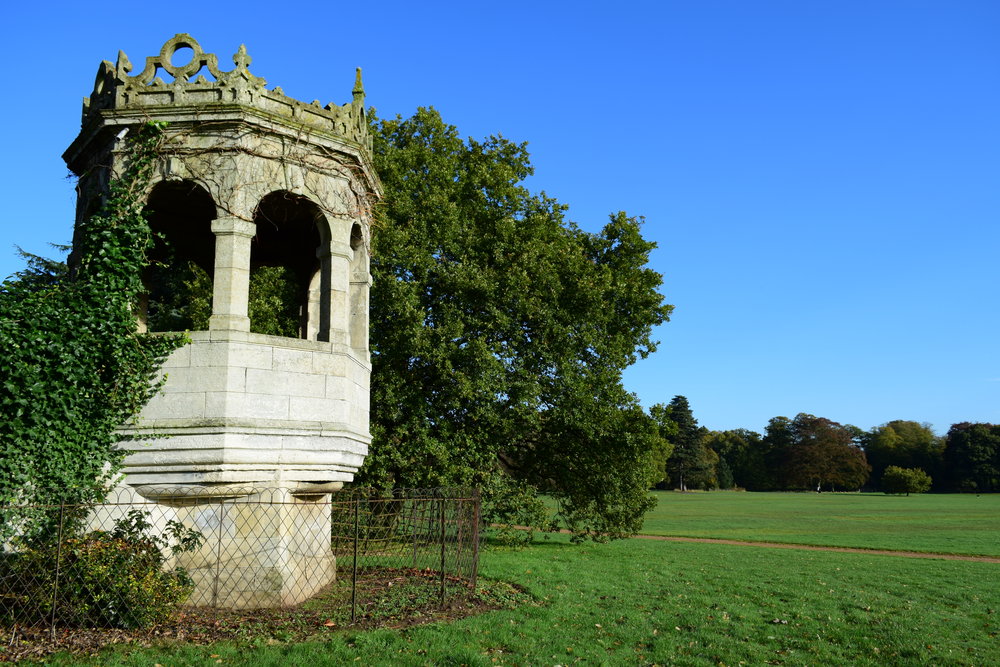Features
Handling
Performance
Verdict
Specification
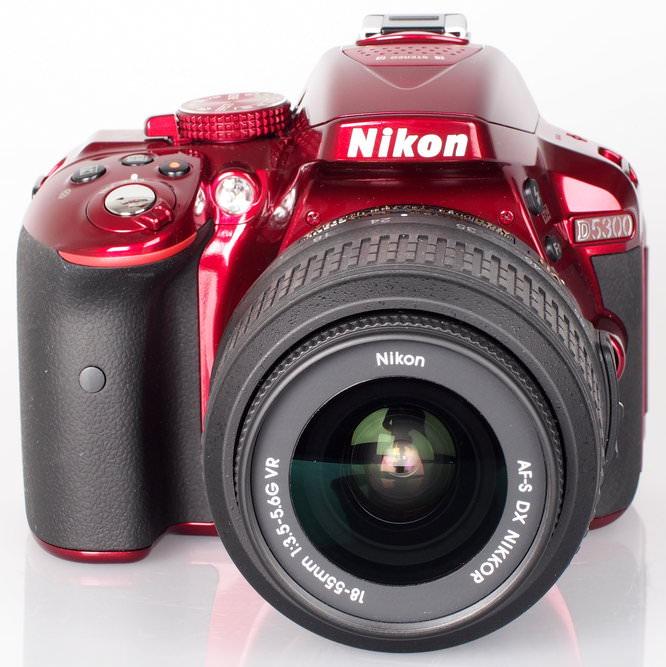
The Nikon D5300 Digital SLR is an update to the Nikon D5200, with a 24 megapixel APS-C CMOS sensor, with no OLPF (Optical Low Pass Filter) designed to give the sharpest image quality possible.
It features full HD video recording with stereo sound, a new 3.2 inch tilting LCD screen, and a new, more compact body. Built in Wi-Fi enables quick sharing to social media websites (via the Nikon app), and the built in GPS/A-GPS enables GPS log data to be inserted into the JPEG's EXIF information. The Nikon D5300 is available in black, red, and silver.
Nikon D5300 Features
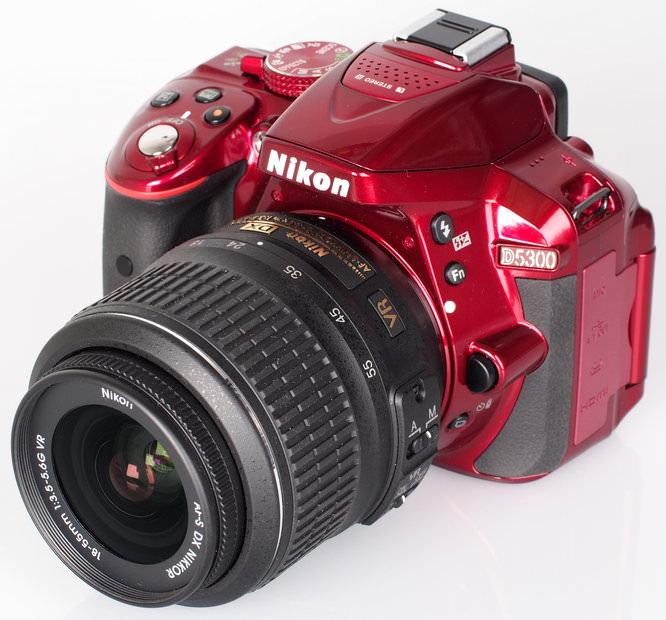
The Nikon D5300 features a 24.2 megapixel APS-C CMOS sensor, with no optical low-pass filter, which should enable sharper and more detailed images. The camera features full manual controls, as well as automatic and scene modes to make it easier to use for beginners. Effects are available including Night Vision that boosts the ISO setting and switches to black and white to take photos at quick shutter speeds even in extremely dark conditions, without the need of a tripod.
The Nikon D5300 is the first Nikon Digital SLR to feature built in GPS and Wi-Fi. Wi-Fi lets you transfer photos to a smartphone or tablet, as well as let you remotely control the camera, using live view, with the touch-screen used to set the focus point. From the app you can upload to social network sites such as Facebook. Alternatively you can select the photos you'd like to share from the camera itself, which will be uploaded to the smart phone when next connected.
Built in GPS records location data (longitude, latitude, altitude), with the EXIF data in the image, and this can be used with ViewNX 2, Nikon Image Space and other GPS aware apps. The A-GPS function gives quicker acquisition of GPS lock.
FullHD video is recorded at 60p, 50p, 25p and 24p with stereo microphones built in as well as a mic socket built in for those who want to improve sound quality and / or use an off-camera microphone.

Nikon D5300 Key Features
- 24.2 megapixel APS-C CMOS sensor
- No OLPF (Optical Low Pass Filter)
- Optical viewfinder, with increased magnification (approx. 0.82x)
- 3.2 inch tilting vari-angle screen, 1037k dots
- Wi-Fi connectivity
- GPS / A-GPS built in
- ISO100 - ISO12800, extends to 25600
- EXPEED 4 image processor
- 39-point AF, 9-cross type AF
- 5fps continuous shooting
- 2,016-pixel RGB metering sensor with Nikon’s Scene Recognition System
- Full HD movies at 1080/60p, 50p, 25p, 24p
- HDMI output supported
- Built-in stereo microphone and compatibility with Nikon’s ME-1 Stereo Microphone
- HDR and Active D-Lighting
- Special effects for still images and movies
- 16 Scene Modes
- 14-bit RAW recording
- Stable grip for secure handling
- Improved graphical user interface for clearer menus
Nikon D5300 Handling
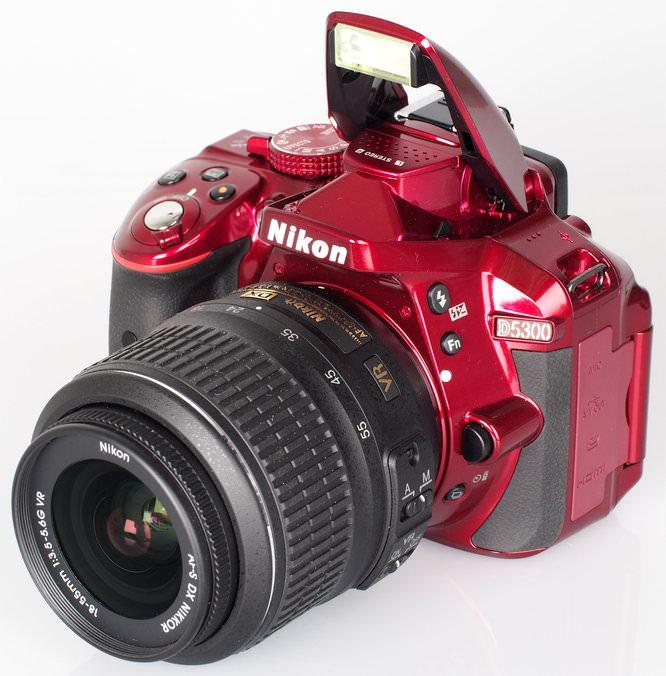
The Nikon D5300 has an impressively clear and bright 3.2inch screen with very good viewing angles, and despite the reduction in body size, Nikon has still managed to include a larger screen than the previous model. The screen can be tilted for viewing from in front of the camera, or for shooting at awkward angles. The camera uses a 39-point AF system, with 9 cross-type sensors, and the focus area is shown in the optical viewfinder clearly with red sections, although the viewfinder isn't the largest, it is much quicker to use the camera with the optical viewfinder.
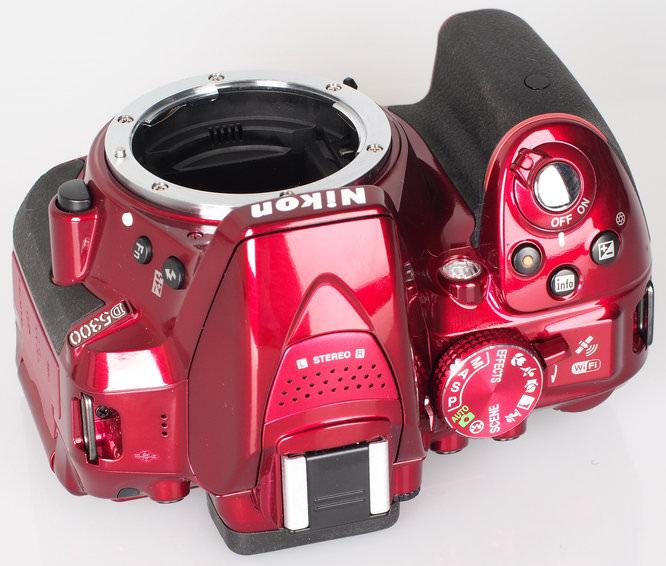
With a smaller body than the D5200, Nikon says that the camera has an improved grip, however we found the space between the grip and the lens quite tight (even when using the standard 18-55mm VR kit lens), meaning that anyone with quite large hands may find it a little small.
The body is said to be made from a monocoque design, which enables the camera to be smaller, and while Nikon wouldn't disclose what the body was made from, it feels solid and well built, with a number of premium touches such as a stylish finish on the mode dial. The top of the camera also features a stereo microphone, and video recording has been improved.
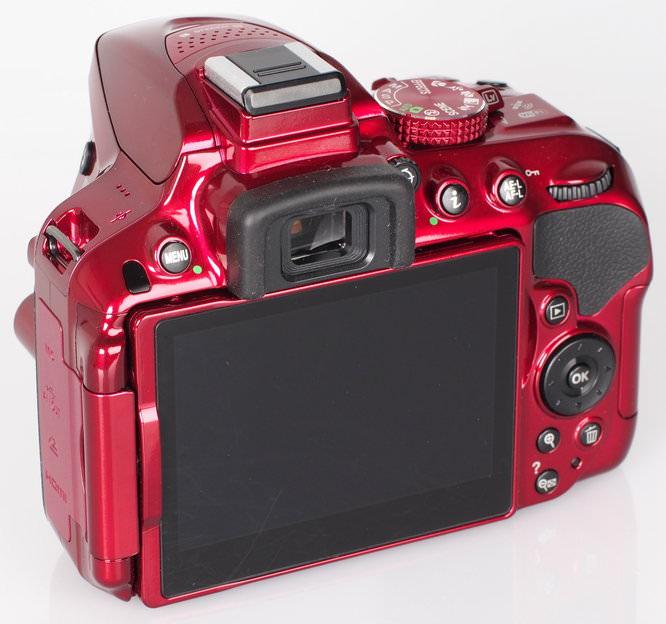
The control system on the camera can be a little awkward at times, although should become quite familiar with regular use. For example, you can use the function button in combination with the control wheel on the back to change the ISO speed, or the exposure compensation button and the control wheel. But then if you press the drive mode button (which is now on the left below the lens release button), you can't change the option with the control wheel on the back, instead you have to use the 4-way control pad, then you have to press OK to select the option.
The other main method of changing settings and options is using the button, and this lets you set the options on the rear screen without having to go into the menus. Unlike other cameras, you can't assign functions to the 4-way controller, and for more direct access to settings, you'll need to look at the Nikon D7100. Thankfully the menus are neatly and clearly laid out with each section colour coded, and if you need any help you simply press the ? button.
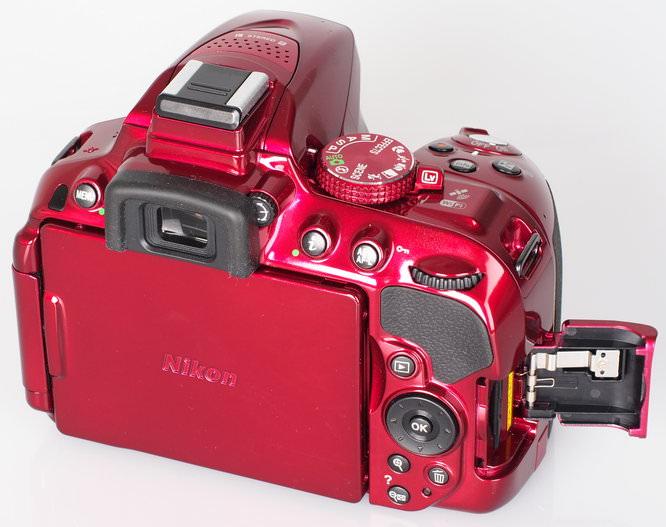
The buttons on the camera are smaller than the previous model, due to a smaller body, and larger screen. The drive mode button is flush with the body, which can make finding it difficult when shooting in dark conditions.
 |
 |
 |
| Main screen | Remote shooting | Viewing photos |
Wi-Fi - The Nikon WirelessMobileUtility (all one word) app is available in the Android or iOS app store, and lets you browse photos or remotely control the camera. You can set the focus point with the touch screen on the smartphone, and take photos, although options are quite limited.
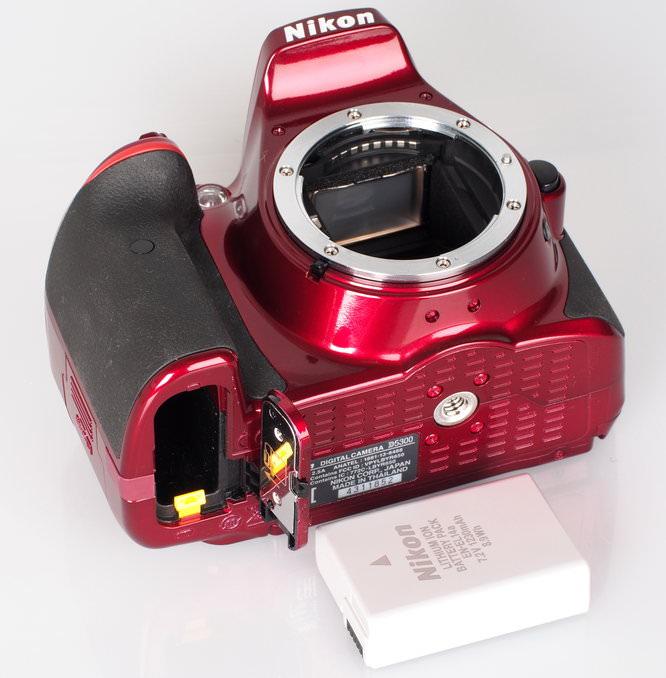
Battery life - Battery life is rated at 600 shots according to Nikon / CIPA test results, and the camera comes with a higher power EN-EL14a battery with 1230mAh rating compared to the 1030mAh rating of the EN-EL14.
Speed - We took a number of shots to test the camera's responsiveness, from switch on to first photo, shot to shot, focusing speed etc. We take a number of shots and then use the average to ensure accurate and consistent tests, making it easy to compare with other cameras.
| Nikon D5300 | |
| Shutter Response | 0.05 /0.4 Live view |
| Wide - Focus / Shutter Response | 0.45 / 1.9 Live view |
| Full zoom - Focus / Shutter Response | 0.45 / 1.6 Live view |
| Switch on Time to Taking a Photo | 0.85 |
| Shot to Shot without Flash | 0.6 |
| Shot to Shot with Flash | 0.75 |
| Continuous Shooting - JPEG (shots before slow down) |
5fps (9 shots) |
| Continuous Shooting - Flash | N/A |
| Continuous Shooting - RAW | 5fps (5 shots) |
| Continuous Shooting - RAW + JPEG | 5fps (5 shots) |
Tested using a Sandisk Extreme (80MB/s) Class 10 / UHS 1 card. Shutter response is excellent, although focus speeds are a little on the slow side. Using live view focus and shutter response speeds are very slow, making it a frustrating process using the live view feature for photos. Switch on time and continuous shooting speeds are good.
Nikon D5300 Performance
Additional sample photos and product shots are available in the Equipment Database, where you can add your own review, photos and product ratings.
Nikon D5300 Sample Photos
Sample Photos - The camera produces images with excellent colour reproduction and exposure is reliable. The portrait photo with flash shows no signs of red-eye, and detail is very good. There are a number of options for capturing shots in a variety of conditions, including a Night Vision effect mode, and night shooting scene modes.
Nikon D5300 Lens test images
Lens Performance - Using the 18-55mm VR kit lens, images can be slightly soft straight from the camera, and for the best results we would recommend sharpening either in camera (adjusting photo settings), or on the computer. Macro performance is quite good for a kit lens, letting you get close to the subject when using the zoom.
With in-camera distortion correction switched on, the camera does a very good job to correct for distortion, vignetting, and chromatic aberration, and the lens is quite resistant to flare even though no lens hood is provided. Images are slightly softer in the far corners, however for the most part, the kit lens should suit most people, although for a step up in image quality, and to get the best out of the sensor, we would recommend using a prime lens.
Nikon D5300 ISO test images
ISO Noise Performance - ISO performance is good with low noise at ISO100 and ISO200, this continues to be low at ISO400 and ISO800 with just a slight drop in levels of detail, which is more noticeable at ISO1600. Detail is reduced further at ISO3200, but colour is good. Noise increases again at ISO6400. Noise becomes much more noticeable at ISO12800, with a loss of colour saturation.
Noise performance is improved when compared to the Nikon D5200, with ISO12800 and ISO25600 showing better results, and while we wouldn't recommend using ISO25600, ISO12800 may still provide usable results if resized for use on the web.
Nikon D5300 White-balance test images
White Balance Performance - Auto White Balance (AWB) gives a warm image under tungsten lighting, with the Tungsten / Incandescent preset giving a much more neutral result. AWB performs well under fluorescent lighting, with the fluorescent preset also giving a good result.
Nikon D5300 Outdoor images
D-Lighting improves photos, retaining more detail in highlights and shadows, however to extend dynamic range further you can use the HDR mode that combines a number of shots at different exposures for much more detail in highlight and shadow areas. The HDR mode can be used handheld in good light.
Nikon D5300 Digital filters
Digital Filters - The camera doesn't feature a built in panoramic mode, instead you will need to do this manually on your computer. Effects on the mode dial let you shoot with a number of different effects applied. The effects available are: Night vision, colour sketch, miniature, selective colour, silhouette, high key and low key. A number of additional effects can be applied in playback. Picture control lets you choose from standard, neutral, vivid, monochrome, portrait or landscape and these can be customised letting you adjust sharpening, contrast, brightness, saturation and hue.
The retouch menu is worth highlighting as there is a large number of options available including: D-Lighting, Red-eye correction, Trim, Monochrome, Filter effects, Colour balance, Resize, Image overlay, RAW processing, Quick retouch, Straighten, Distortion control, Fisheye, Colour outline, Perspective control, Colour sketch, Miniature effect, Selective colour, and Movie editing.
Video - The camera has a number of video options including 60p, 50p, 25p and 24p frame rates, and stereo microphones built in, as well as a microphone socket. Audio options include a wind filter and the movie mode can be used with manual controls. Quality is good although focus can be slow when using continuous AF, and the focus noise is picked up by the camera.
Value For Money
The Nikon D5300 is available for £729 body only which makes it good value for money considering the features on offer, and is one of very few Digital SLRs with built in GPS and Wi-Fi, with only the Canon EOS 6D (at £1450 body only) featuring both. Alternatives to look at include the following cameras:
Canon EOS 700D, 18mp, Vari-angle touch-screen, £585 with kit lens.
Nikon D7100, 24mp, Weather-sealed, £769 body only.
Sony Alpha A65, 24mp, GPS, £589 with kit lens.
Pentax K-5 II, 16mp, Weather-sealed, £719 with kit lens.
Panasonic Lumix G6, 16mp, Wi-Fi, £517 with kit lens.
You'll also need to buy a memory card and a case or bag to keep your camera safe and protected - have a look at our complete guide to camera bags.
Nikon D5300 Verdict
The Nikon D5300 takes the tried and tested Nikon D5x00 series and updates it with a new more compact body, upgrading the screen in the process to a larger 3.2inch version and adding built in Wi-Fi and GPS into the mix. Along with this the 24 megapixel sensor now features no optical low pass filter, which will give improved image quality when shooting with high quality lenses, and we would recommend using prime lenses to get the best out of the camera. In terms of specifications and features, the Nikon D5300 outperforms the competition with built in Wi-Fi, GPS, and a larger 3.2 inch screen, as well as the predecessor, the D5200, with improved battery life and noise performance. However, live view focus is still frustratingly slow, with cameras like the Sony Alpha A65 and Panasonic Lumix G6 offering much quicker performance in live view modes.
While some alternatives offer a weather sealed body, or a lower price, none offer both GPS and Wi-Fi, and for anyone with Nikon lenses already this would make an excellent upgrade. For those looking for their first Digital SLR, the choice isn't quite so clear cut, as some may find the handling of this camera a little too small, and if you have large hands we would recommend trying the camera in person if possible. The Nikon D5300 provides excellent image quality, with a compact, stylish Digital SLR body, with useful features including built in Wi-Fi, GPS, and an excellent 3.2inch screen. With a 24.2 megapixel sensor, with no OLPF, the camera is capable of taking some very detailed and sharp photos, making it a camera you can grow into, and if you are prepared to invest in additional lenses, then you should be able to get the best out of the camera.
Nikon D5300 Digital SLR Review: The Nikon D5300 Digital SLR offers an impressive specification and delivers impressive image quality.
